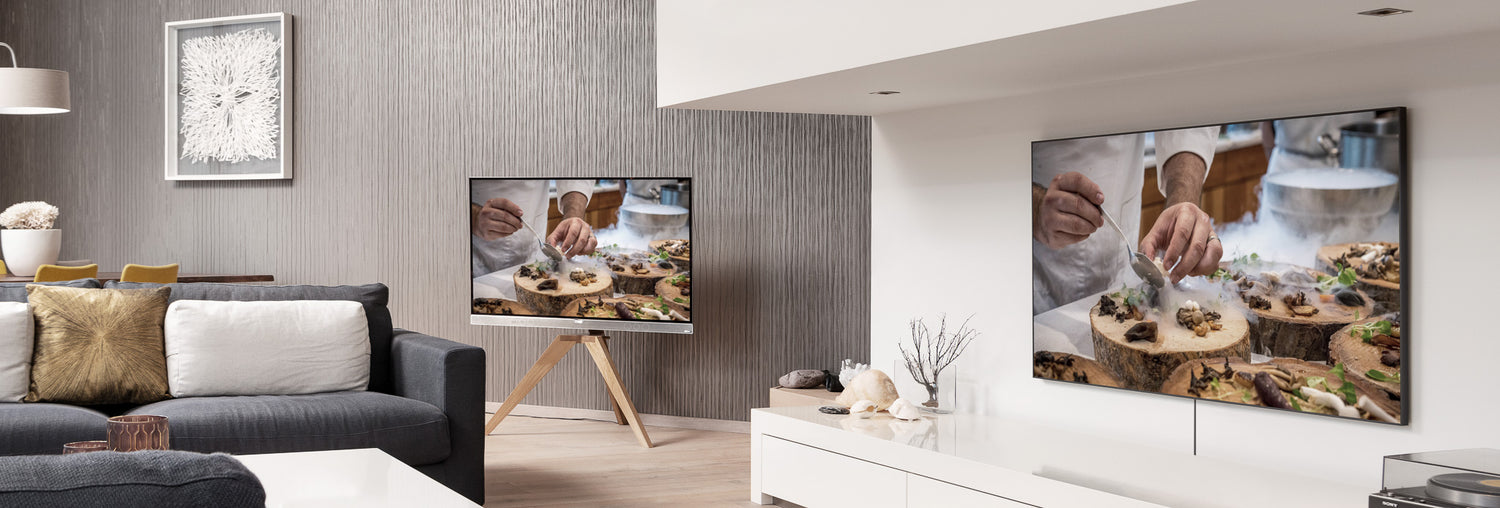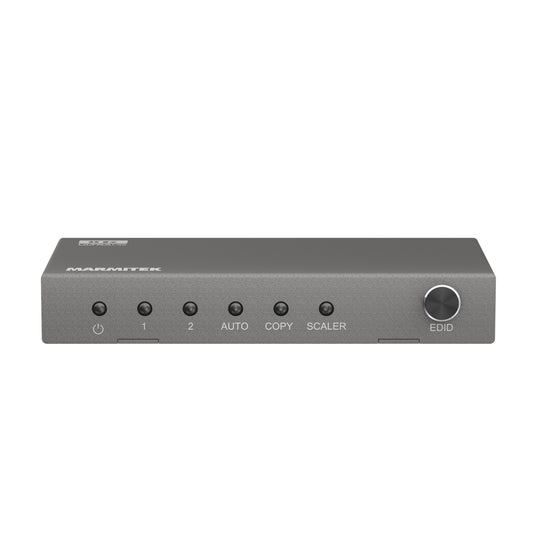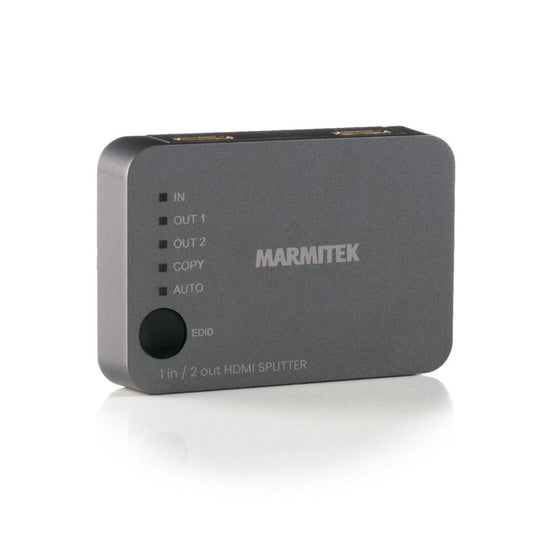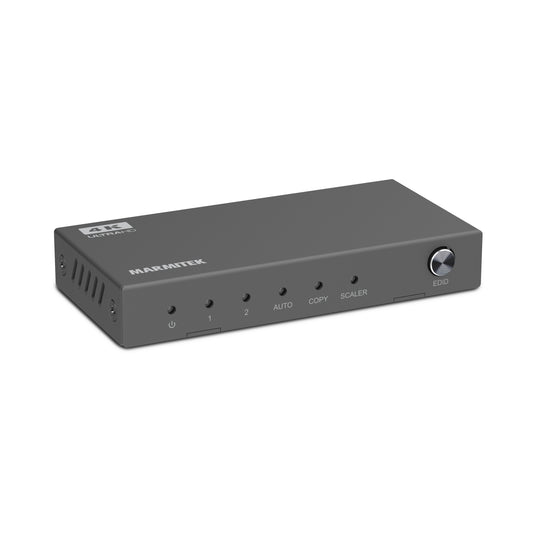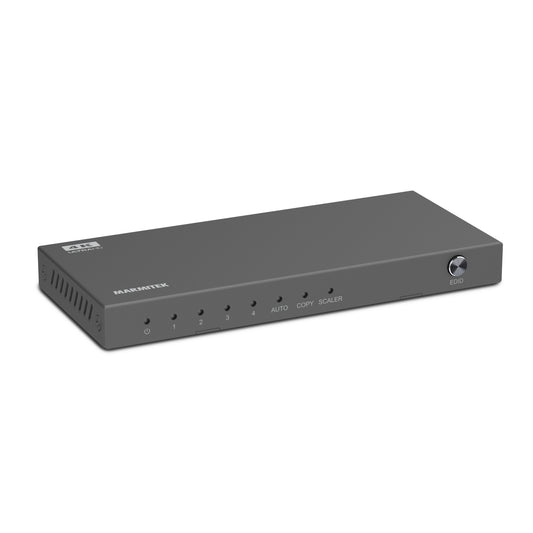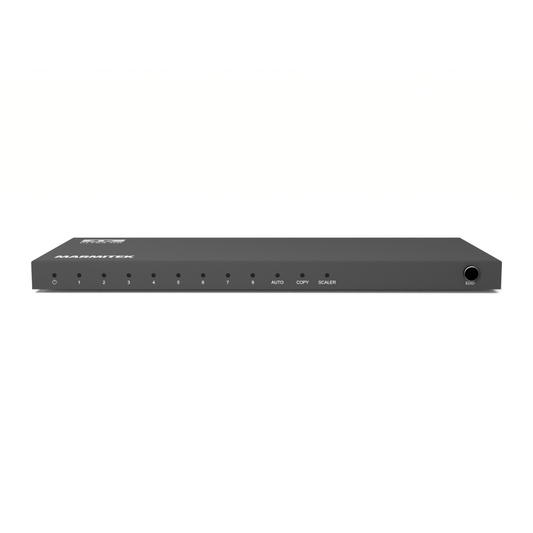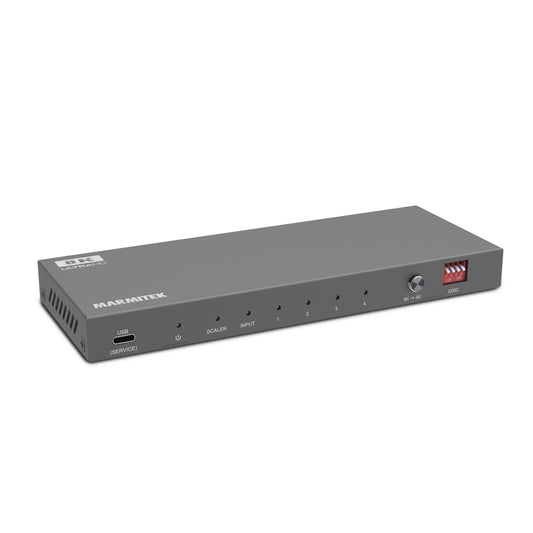-
Connections
1 in / 2 out
Resolution
8K 60Hz, 4K 120Hz
Video bandwidth
40 Gbps
Case
Metal
Dimensions
14 x 90 x 44 mm
In stock
Delivered between 2 to 5 days
1,103.00 krUnit price per1,103.00 SEK -
Connections
1 in / 2 out
Resolution
4K 60Hz
Video Bandwidth
18 Gbps
Housing
Plastic
Dimensions
19 x 87 x 60 mm
-
Connections
1 in / 2 out
Resolution
4K 60Hz
HDMI version
2.0
Video Bandwidth
18 Gbps
Housing
Metal
Dimensions
14 x 90 x 44 mm
In stock
Delivered between 2 to 5 days
882.00 krUnit price per882.00 SEK -
Connections
1 in / 4 out
Resolution
4K 60Hz
HDMI version
2.0
Video Bandwidth
18 Gbps
Housing
Metal
Dimensions
14 x 136 x 61 mm
In stock
Delivered between 2 to 5 days
1,103.00 krUnit price per0.00 SEK1,103.00 SEK -
Connections
1 in / 8 out
Resolution
4K 60Hz
Downscaler
Yes
Daisy-chain
Up to 3 splitters
Housing
Metal
Dimensions
15 x 230 x 85 mm
In stock
Delivered between 2 to 5 days
1,654.00 krUnit price per1,654.00 SEK -
Connections
1 in / 4 out
Resolution
8K 60Hz
HDMI version
HDMI 2.1
Video Bandwidth
48 Gbps (12 Gbps per channel)
Housing
Metal
Dimensions
18 x 188 x 70 mm
In stock
Delivered between 2 to 5 days
1,654.00 krUnit price per0.00 SEK1,654.00 SEK
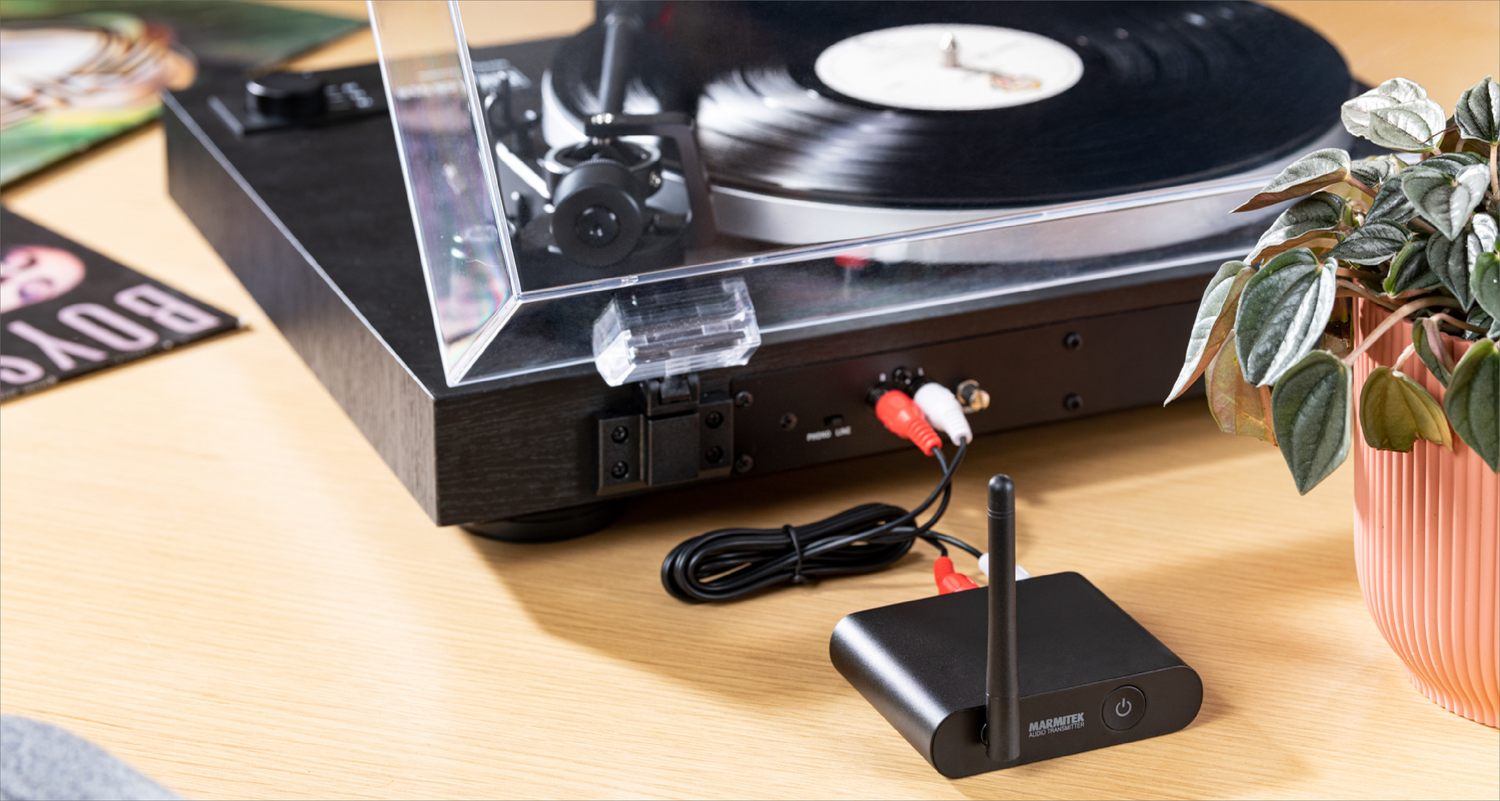
Can't figure it out?
We are happy to help you!
If you have any questions about our products or our services, do not hesitate to contact our customer service. Our employees are ready to help you and answer your questions.


